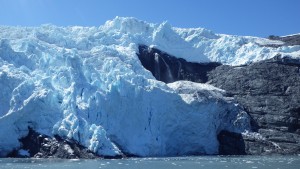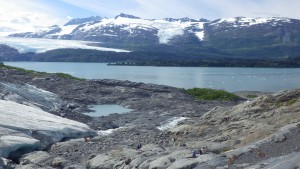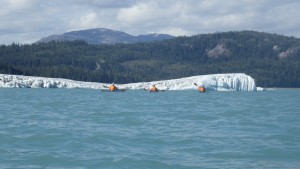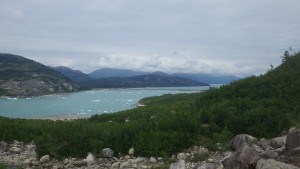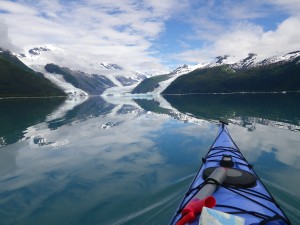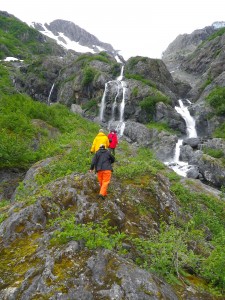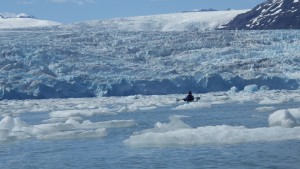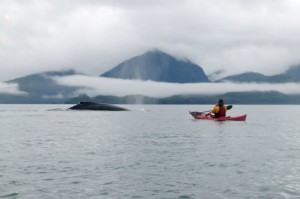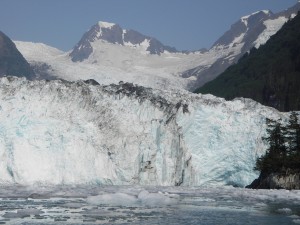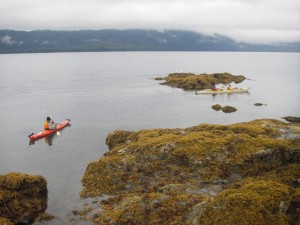The longer you’re out, the more you let go!
Multi-day trips are differentiated from Expeditions in that they are generally shorter in duration and slightly less exposed.
This being said, the weather can be rugged anywhere and everyplace in the Sound is wild and beautiful!
Types of Multi-day Trips
1) Paddling out and back – Journeying under our own power.
2) Paddling one way and water taxi the other- The perfect compromise between afforadability and access
3) Water taxi out and back- The best way to get way out there!
Questions to consider while deciding where you want to go:
Do you want a fully guided or an escorted trip? See the bottom of the page for a detailed explanation of the difference!
How much paddling do you want to do each day and overall?
Are you interested in short paddling days, full days, or a fusion of them both?
Do you want to break camp daily and travel, or base camp and do day trips, or again a fusion of them both?
How flexible is your schedule?
Are you interested in glaciers or island hoping or both?
Do you want to cook for yourselves or kick back and have all meals prepared for you?
How remote do you want to get?
What are you’re wildlife viewing wishes?
Blackstone Bay offers the most accessible tidewater glaciers to Whittier. A long days paddle or an hour water taxi ride away, at the head of Blackstone Bay lay 2 tidewater glaciers and 1 hanging glacier, all of which calve into the turquoise water. The 2 tidewater glaciers, Blackstone and Beloit, tie into a vast snowfield with jagged Nunataks penetrating the snowfield.
After paddling in front of the massive faces of these calving glaciers, paddle along the shoreline beneath waterfalls that seem to fall from the sky. Look for seals and otters silently breaking the waters’ surface. Eagles perch in the Spruce and Hemlock trees and glide overhead.
Aside from these glaciers there are 2 other hanging glaciers and 2 land bound glaciers.
Paddle across the Fjord to Willard Island or to the southern shore for awesome hiking next to the land bound giants. The hike allows for some amazing photo opportunities of you resting against the glacier, a chance to stretch your legs, and elevated views of where you’ve been and what’s to come.
Blackstone’s close proximity to Whittier makes this an ideal and most affordable sea kayaking day trip or extended trip to experience tidewater glaciers, paddling through ice and the amazing Alaskan wilderness.
One of my favorite areas in Prince William Sound, Port Nellie Juan unlocks an incredible arm of the Western Sound where fjords lead to bays, hanging, valley, and tidewater glaciers, rugged peaks, glacier smoothed granite domes, steep cliff faces and white sand beaches. Ride the current into a tidal lagoon past massive ice chunks to access Nellie Juan Glacier. Exercise your legs on a hike over rolling granite ridges to gain aerial / topographical perspective, revealing valleys you saw while kayaking or relaxing in camp.
The paddling and hiking is abundant. The views are incredible. Dare to challenge the depth of this wilderness study area by planning as many days as possible.
This is an extravagant day trip, combining the best of all worlds: sight seeing from the water taxi out and back, remoteness, wildlife and sea kayaking with tidewater glaciers.
Harriman Fjord
Paddle west 13 miles from the black sand beach and the cul-de-sac of three glaciers at the eastern end of Harriman Fjord to gently rising Harriman Glacier at the western end. Along the route to the north is the Northwestern rim of the Chugach Mountains.
This massive outcropping is where glaciers, once out to the Gulf of Alaska, have retreated north across the sound and made their final stand. Home to serrated, towering peaks such as 7,605’ Mt. Muir and 9,638’ Mt. Gilbert, (keep in mind this is 9,000 feet coming straight out of the sea!) Deeper still to the northwest is the Mount Marcus Baker, 13,176, the Chugach’s highest peak.
This north shore is literally a wall of steep glaciated mountains. Camp along the southern shore for a night devoted kicking back for some reflection. The southern shoreline is a peninsula with 3,500’ glaciated ridgeline separating Port Wells from Harriman Fjord.
Leave camp set up and take a day trip over to the most impressive Surprise Glacier -one of the few advancing tidewater glaciers in Prince William Sound. Continue paddling west to explore the far reaches of the fjord and get some personal time with Harriman Glacier. There are numerous hikes to be had throughout the fjord. Black bears, Sitka Black tail deer, seals, otters, oyster catchers, murrelets, sandpipers, and many other shore birds coexist in this spectacular habitat. Even the Dahl Porpoise, Minke and Orca whales can’t resist passing through.
Harriman Fjord is roughly 30 miles from Whittier.
Like Nellie Juan this is an extravagant and unique day trip. The massive peaks, cluster of tidewater glaciers and black sand beach make for a magical experience.
Icy Bay and Whale Bay
Icy and Whale Bays photo gallery
Whale and Icy Bays in Southwestern Prince William Sound combine some of the most remote wilderness, largest glaciers and highest probability of wildlife available. These fjords are located just inside the barrier islands which separate the Sound from the Gulf of Alaska. Here, whales follow migrating fish into the Sound. Because of its proximity to Whittier and Valdez there are less people which is always a plus when searching for bears and deer. Puffins are often seen flying around and nesting in cliff walls. Spectacular building-like pillars of ice release from the mighty face of Nassau Fjord’s Chenega glacier. Seals seek refuge on the massive ice flows. During spawning season, various species of salmon clog streams, which is sure to attract bears. On calm days there is an opportunity to poke our bows into Port Bainbridge and glimpse at the Gulf of Alaska.
Roughly 70, miles from Whittier, a water taxi is imperative, unless you have a couple weeks! The beauty of the taxi ride out is wildlife viewing and sightseeing for 2 hours while head to, and return back from our destination.
Unakwik Inlet
Unakwik Inlet is roughly a 20 mile long fjord, home to one of the few advancing tidewater glaciers, Mears Glacier, in Prince William Sound. Its location along the northcentral shoreline is far from both Valdez and Whittier, which makes it one of more remote areas of the Sound.
Numerous bays and depth of the Inlet offer endless solitary exploration both by sea kayak and hiking!
Evidence of the 1964 earthquake are visible in the geology of Miners Bay. The Inlet is rich salmon as there is a hatchery at the midway point.
While the water is silty near the glacier, the southern end is crystal clear allowing for amazing shoreline paddling, creeping along looking at sea life clinging to the rocks just beneath the surface.
It’s crucial to remember that on all trips we are voluntarily entering into mother natures’ domain. Preparation is key to optimally enjoying your paddling experience in this temperate rainforest. Prince William Sound is notorious as a sheltered body of water. This is true, however the Sound is a very complicated weather zone. The Gulf of Alaska is separated from Prince William Sound by barrier islands that absorb the brunt of storms traversing the Gulf. Aside from the southern barrier islands the thousands of miles of shoreline within the Sound are not exposed to significant swell and surf except during storms. Localized winds and storms are not uncommon and can greatly alter our paddle plan. Precipitation is abundant in our temperate rainforest as the name suggests. It’s this abundance combined with the highest coastal mountain range that creates the heavily glaciated region. Getting out is the main objective. Once out, we get in sync with what the conditions allow for.
A comprehensive list of what to bring with you on our expedition will be sent to you once we collectively establish the trip itinerary.
Considerations
Escorted vs Guided Trips vs Basecamping
Escorted
Escorting is leadership and water support to ensure safety on the water and provide local insight of camp-able beaches, hikes, paddling options, sea life, sea state and weather, guidance on leave no trace ethics and proper food storage. I bring a satellite phone on every trip for emergency use only. I also provide water bladders for group storage and a group shelter for cooking, eating and relaxing. Water bladders are provided, but you are required to bring a water treatment system.
On the Escorted Trip you are responsible for: raingear and paddling gear (aside from sprayskirt, PFD, paddles, and pumps), sound/waterproof and tested 3-4 season tents, synthetic sleeping bags and sleeping pad, tarps- a tarp for each tent with abundant line to hang it and a tarp for a quick shelter from the rain, dry bags, stove and fuel, cook-set, dish set, food planning, purchasing and preparation, and dish cleaning. You are also required to bring some form of water treatment ie. Boil water, water filter/purification system.
One thing that I cannot stress enough is how important it is to have solid backcountry skills in a temperate environment. This can be a very unforgiving environment. The weather can be rugged: relentless rain and wind for days on end. If you’re thinking about a trip to the tidewater glaciers temperatures can be as low as 40 degrees Fahrenheit. These cold temperatures combined with relentless rain and wind, make for a challenging existence. If you’re not familiar with comfortably living in this potentially cold and rainy backcountry environment I strongly suggest the Fully Guided Trip option.
Fully Guided trips are more expensive. I’m not trying to steer people into more expensive trips. I know firsthand moving from Colorado where it is often dry and rain is short lived and summers are not warm but hot, that the temperate rainforest is a totally different world. I will do everything possible to talk through the logistics of making your camp as weather proof as possible, but ultimately once were out were out and if tents, raingear, sleeping bags, stoves… fail or get soaked, your safety is in jeopardy. My primary concern for every trip is everyone’s personal comfort and safety! This may be a reason for me to have to call the trip.
The bottom line is that sunny trips are easy to manage. Stormy trips, though more challenging, are an opportunity to embrace and overcome adversity. Both are great trips. I’d be a liar if I said that I didn’t love sunny trips. But the reality is that most trips experience many varieties of weather.
Fully Guided Trip
The fully guided option encompasses the escort option plus having all the meals planned, purchased and prepared for you.
With this option my expertise in living- in the temperate environment for the past 10 years is utilized to make your trip as safe and comfortable as possible.
Of course the cook-sets, stoves, dining necessities, and cleaning will be provided for you. A baseshelter is established to ward off bugs, rain and wind, and provide a comfortable place to cook, eat, relax and hang out.
On these trips we eat delicious, healthy, balanced meals. In other words, we eat well! My wife is a registered dietitian and my advisor for meal planning and preparation. Occasionally she even makes a guest appearance on some trips! You are welcome to help in the kitchen, relax in your tent, or enjoy a hike in the temperate rainforest and/or along the shoreline while meals are being prepared.
Three person rainproof tents are provided for two people, while 2 person rainproof tents are provided for individuals. Synthetic sleeping bags and inflatable pads are also provided. To add additional protection all tents are tarped out for additional rainproofing and a bit more covered room. This is what I do with my own tent!
Included in the fully guided option is rain gear: boots, bibs, paddling jacket and poggies/paddling mitts. Sound 3 season rainproof tents for 2 people, sound 2 person tents for individuals. Synthetic sleeping bags and inflatable pads are standard. Tarps! Everything is tarped out! Why? Because this is what I do to make life as comfortable as possible when on my own personal trips.
This is as comfortable as life can be while living out of a kayak.
Basecamp = Fully guided +
Take everything from the Fully Guided option and turn it up another notch.
Basecamping allows us to set up a temporary settled camp equipped with roll up tables and folding chairs, propane 2 burner stove, coolers, all contained in an extremely comfortable enclosed shelter. The tent set up is the same with the addition of another foam pad. Additionally, a tented private toilet is set up! I’m familiar with most of the companies operating in the Sound and haven’t seen a comparable set up. 14 years of guiding and living in the Sound has led me to develop the greatest basecamp!
Reservations are integral to ensuring availability. Please call or e-mail so I can help you form your plans.

